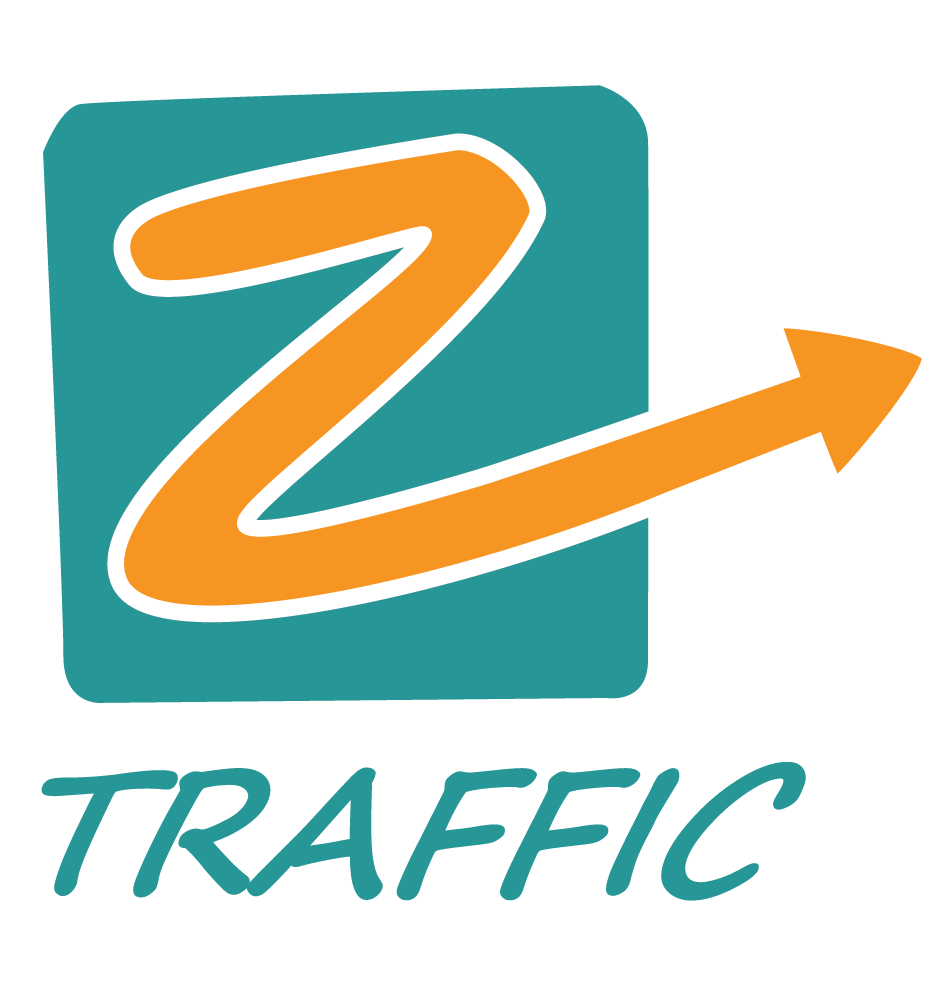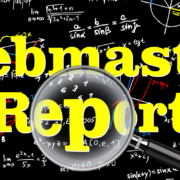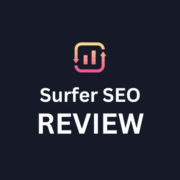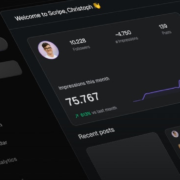From SEO to GEO: How agencies are navigating the quickly changing world of LLM-driven search – Campaign US
AI is rapidly changing search, with implications for media, agencies and brands. Here’s how firms are changing strategy from search engine optimization to generative engine optimization.
March 28 2025
The bread and butter of Google’s rankings have always been website links. Over time, it expanded results to include links to video, images, the latest news, forum posts, shopping sites and more for a comprehensive view of a search query by category.
Then came “knowledge panels,” pop-up boxes offering curated information at a glance.
Now, unless you’ve been on a year-long digital detox, you’ve noticed something bigger: Google is leading many search results with AI-generated summaries, powered by its large language model, Gemini.
The summaries don’t just provide quick answers; they add context in conversational language, compiling information in a way that makes clicking on links feel increasingly optional.
Users don’t even need to go to a traditional search engine. In October 2024, OpenAI’s ChatGTP introduced a search function.
But whether ChatGTP or Google, AI search is quickly gaining favor. On Wednesday, Joanna Stern, The Wall Street Journal’s senior personal technology columnist, wrote, “ads and search-optimized junk made a mess of the go-to engine. Now ChatGPT, Perplexity, Claude — and even Google’s own AI — do it better.”
The headline on her column reads, “I quit Google Search for AI — and I’m not going back.”
She’s not the only one. A Vox Media study in December found 61% of Gen Z and 53% of millennials turn to AI tools instead of Google or other traditional search engines to find information. This trend is also reflected in market movement. Google’s global search market share dropped below 90% for the first time since 2015 in the last three months of 2024, according to StatCounter.
Where does the integration of AI into search leave earned media? Will traffic to media sites free-fall? What about earned media in the role of SEO strategies?
Tejas Totade, chief technology officer at Ruder Finn, says search is at a “seminal moment.”
“Search used to be considered a gateway to content. But it has become the end destination, which is the biggest shift in how we’re thinking about search at Ruder Finn,” he says. “As communicators and marketers, our focus had always been, ‘How do we show up positively on the first page of Google?’ Now it’s not just about showing up; it’s also about understanding what the LLM is going to say about you, because of how prescriptive it is.”
Add to that the conversational delivery, and it’s easy to see why someone might take whatever the AI generates at face value. This has massive implications for the proliferation of misinformation or disinformation.
LLM search could also diminish the role of the byline and even the media brand as a marker of trustworthiness.
“In the age of LLM-driven results, if the byline doesn’t appear, does a journalist’s credibility still matter?” Totade asks rhetorically. “Of course it does in the grand scheme, but from a user’s perspective, everything starts to feel like just an API — one massive RSS feed pulled into a tiny window.”
Whether it poses an existential threat or not to the media, Totade says that what’s clear is “content is becoming even more commoditized. It’s still king, but perceptions are being shaped by what appears in AI results.”
In November, Ruder Finn launched rf.aio, an LLM-optimization service, which includes monitoring of ChatGTP, Anthropic’s Claude, Google’s Gemini and Meta’s Llama to evaluate how they respond to brand-related queries.
Learning from monitoring will have a major impact on brands’ earned media strategy.
“We’re already finding unexpected differences in citations from AI,” he says. “You might think, for example, a story on how to maximize credit-card points to book your next Bali vacation might cite, say, the Financial Times or Wall Street Journal. But guess what? It’s probably going to come from NerdWallet.”
Why? That’s because AI systems tend to favor content that resonates with certain audiences, like millennials, who love practical advice, and that’s the type of content NerdWallet specializes in.
AI platforms have also been signing licensing deals that will influence summaries and citations. ChatGTP, for instance, has partnerships with the likes of Conde Nast, the Associated Press and the Financial Times, the latter which led to concerns from PR pros in the U.K.
“What does this mean for newspaper paywalls? Why would you continue to pay for a subscription for the newspaper if you can just get the info from AI?” posted Flo Powell, joint MD at Midnight Communications, a B2B PR agency.
Todd Ringler, head of U.S. media at Edelman, says, “so-called generative engine optimization is going to be front-and-center in any successful brand or reputation campaign.”
“Unlike SEO,” he says, “GEO focuses on authoritative content to give it a leg up on discoverability within AI platforms. Among other changes, multimedia integration and earned media stories, including those behind the paywall, take on new currency in this changing value equation. Earned media and content strategies need to be savvy to where and how AI search is finding and structuring its answers and actively work to shape the information.”
In May, Edelman is “launching a new offering that analyses these dynamics” aimed at helping companies define critical swim lanes for their brands. “It’s an exciting evolution and layering of our current media strategies,” adds Ringler.
LLM search could also increase the prevalence of disinformation and misinformation, if fewer people dig deeper than AI summaries.
“This is something clients will need to closely monitor and act fast on, before misinformation and disinformation gets picked up by AI search,” says Christopher Hippolyte, deputy head of the corporate affairs practice at Syneos Health.
Since LLMs appear to be prioritizing content from authoritative voices, “a part of your earned media strategy in healthcare needs to be engaging multiple stakeholders, [such as] healthcare advocates and even scientific organizations and nonprofits, such as the American Medical Association or American Association for Cancer Research.”
“While still in its early stages, GEO is evolving quickly as a discipline and making waves,” says Charlie Baldwin, SVP of insights and analytics at We. Communications, noting “organizations worldwide are busy developing theories as they work to reverse-engineer LLMs.”
He says it’s “all in an effort to figure out how to get their content noticed at the top.”
We. is conducting its own analysis to deepen clients’ understanding. “What is abundantly clear to us already is that telling a strong and clearly worded story is more important than ever,” Baldwin says. “Appearing in credible, authoritative publications and focusing on content that offers authentic, ownable language is essential.”
Distinct language that stands out could become a competitive advantage for smaller brands.
“While this approach is critically important for market leaders, it’s also a fantastic opportunity for challenger brands,” he says. “A distinctive, niche positioning hasn’t always been an advantage in search, but as people increasingly turn to AI for specific recommendations, brands that used to be buried in traditional search results could be surfaced more prominently.”
Despite the emphasis on GEO, brands still need to get their messaging across in longer storytelling.
“Optimizing for GEO helps, but we still need to make content worth reading in full so that the message can be delivered in the full brand context, be it a story or information page,” says Ephraim Cohen, global head of data and digital at FleishmanHillard. “I refer to it as the continually evolving CliffsNotes challenge: Is it enough to read a summary of Frankenstein? Or is it worth reading the full book? Content needs to be worthwhile for the right audience.”
“Like all cycles, the challenge is figuring out what type of content is valuable enough for people to click through to and read — and, in paywall cases, pay for — versus reading what is essentially a summary or a custom article in the form of a generative AI answer,” Cohen emphasizes.
As for where search is headed, he sees a couple scenarios.
On one end of the spectrum, AI search could actually boost some earned media traffic with smarter summaries that drive curiosity.
“People will want to click through for the full context or deeper story,” he says. That’s what we see today in the volume of GenAI traffic versus searches that are clicked through. In that scenario, earned media can thrive, especially if outlets make sure their stories are clearly structured and easy to pull insights from — similar to SEO best practices.”
But there is also another scenario.
“If AI responses become so good that people rarely click through, content creators will shift more toward being information providers to the machines. The challenge becomes, how do you ensure your voice, message and facts are what’s getting pulled and presented? That’s a new layer of strategy, less about optimizing for search engines, more about optimizing for AI training and outputs,” says Cohen. “There are similarities to social media, where people were looking at social content more for news versus reading original news sources. The result of that was we started treating the right content creators as news sources.”
“This is an area we are exploring with intention now: forming a capability around optimizing for AI training and outputs,” he says.
He says new solutions could emerge, as well. LLMs, for instance, could end up working with agencies.
“We can then aggregate our brands’ trusted content to feed directly for training models similar to how they are cutting deals with other content providers such as news organizations,” says Cohen.
This story first appeared on PRWeek U.S.
The Brand Brief: Success hurts, Pizza Hut’s wedding cake
Social leads share sanity-preserving advice while scrolling through today’s feeds
100 days in office: Colle McVoy president Obele Brown-West on her agency world return
How CMOs are rethinking teams, tools, agencies with AI
100 days in office: Bunt, the metaphorically colorful creative agency
LATEST FROM CAMPAIGN
The Farmer’s Dog creates soundtracks for three different dog personalities
Yahoo Sports goes full guillotine with Liquid Death in new fantasy football game
Meet the changemakers who are reshaping disability inclusion in advertising
Thinkbox CSO: Disabled representation in advertising is a ‘commercial necessity’
Dentsu whistleblower reports up by almost half in 2024
Reddit's Q2 ad revenue jumps 84% year-over-year to $465 million
August 2025 Google Webmaster Report: Core Update, Volatility, AI, Web Guide & More – Search Engine Roundtable

The past month was a bit intense with Google search ranking volatility. With the June 2025 core update kicking off the day before July 1st, we started to see ranking movement in early July and it continues throughout the core update, even after it finished. It was just a super-heated month with Google Search.
Then, on the AI front, Google released a web preview of Web Guide after getting a lot of complaints around the drop of clicks we get from AI search results – yea, Google disputed the studies again. Don’t you worry, Cloudflare it on it. Google continued to push AI Mode, expanding it to India, UK and Workspace accounts. We have the video version of Search Live, new AI Mode features, and so much more.
Google tried to appease us with a new Search Console logo and by telling us normal SEO works for AI. Google also had a three day conferencing, one day was just about indexing.
But it is all good, Google is making crazy money – so it is all good. Then, just late on Friday, Danny Sullivan stepped down from his role as Google’s Search Liaison.
Below are the top headlines I manually selected and you can read the July 2025 Google webmaster report if you missed it:
Google Updates:
- Google June 2025 Core Update Finished Rolling Out
- Google June 2025 Core Update Volatility Remains Heated Through Weekend
- Google June 2025 Core Update Leading To Some Partial HCU Recoveries
- Google June 2025 Core Update Volatility Just Began – Do You See It?
- Google Search Ranking Volatility Heated Yet Again
- Google Search Ranking Volatility Was Heated This Weekend – Reversals?
- Google Search Ranking Volatility Remains Heated – Spiking Thursday
- Google Search Ranking Volatility Very Heated Days After Core Update Completed
Google AI:
- Google Web Guide Uses Gemini To Organize Your Web Results
- Pew: Searchers Less Likely To Click On Links In Google Search With AI Overviews
- Similarweb: No Clicks From Google Grew From 56% to 69% Since AI Overviews
- Google AI Mode Button Now On Home Page Search Box
- Google Search Live With Video Rolling Out
- Google AI Mode Gains Upload Files, Canvas Planner & Search While Browsing
- Google AI Mode Comes To Circle to Search and Lens
- How The Google Ask For Me Feature Works & New AI Local Calling
- Google Search Rolls Out AI Mode In India Without Labs
- Google AI Mode Expands To The UK
- Google Says AI Mode Rolling Out To Workspace Accounts
- Google Search: Help Me Shop In AI Mode
- Google AI Mode Gets Gemini 2.5 Pro & Deep Search For A Fee
- Google: Easy To Draw Parallel Between Meta Keywords & LLMS.txt File
- Google AI Mode Shows Different Sources For The Same Query
- Google AI Mode Follow Up Questions With Suggestions
- Google AI Mode Can Respond In Non-English Languages
- Google Discover Officially Gets AI-Generated Summaries
- Cloudflare: We Will Get Google To Provide A Way To Block AI Overviews
Google SEO:
- Google: Barely Indexed Sites Can Mean Google Isn’t Convinced Of The Site Overall
- Google: Normal SEO Works To Get Into AI Overviews
- Google Search Central Deep Dive 2025 Indexing Slides
- Google Search Doesn’t Support Different Product Pricing By States
- Google: It Makes Sense To Noindex LLMs.txt
- Google On CSS & SEO
- Google On Show Webpage SEO
Google User Interface:
- Google Virtual Try-On & Customized Price Alerts Now Live
- Google Search Posts On Reddit Section Replacing Discussion and Forums?
- Google Search Result Snippets With See More & Other Hyperlinks
- Google Search Tests Replacing More With More Filters & Show More
- Google Merchant Knowledge Panel Deals Section Update
- Google Tests Much Larger Favicons In Search
- Google Tests Low, Typical, High Price Labels In Search Result Snippets
Google Search Console & Merchant Center:
- Google Search Console Has A New Logo
- New Google Search Console Discussion Forum Search Appearance Filter
- Google Search Console Analytics API New Metadata Incomplete Data Points
- Google Updates Merchant Return Policies & Loyalty Programs
- Google Merchant Center Gains Automatic Shipping Updates
Google Local & Business Profiles:
- Google Business Profile Attributes With Confirmed By Percentages
- AI Generated Google Business Profiles Menus
- New Google Business Profile Check Edit Status
- Google Business Profiles Automatically Adding Social Media Links To Businesses
- Google Business Profiles Now Requests Text/WhatsApp Number During Setup
- Google Business Profiles Reverification After Suspensions Increasing?
- Google Local & Business Profiles Drops June 25th – Reporting Glitch?
Google Earnings & Business:
- Google Ad Revenue Up 10.4% & Overall Revenue Up 14%
- Danny Sullivan Steps Away From Google Search Liaison Role
Forum discussion at WebmasterWorld.
The content at the Search Engine Roundtable are the sole opinion of the authors and in no way reflect views of RustyBrick ®, Inc
Copyright © 1994-2025 RustyBrick ®, Inc. Web Development All Rights Reserved.
This work by Search Engine Roundtable is licensed under a Creative Commons Attribution 3.0 United States License. Creative Commons License and YouTube videos under YouTube’s ToS.
Surfer SEO Review: The Best AI SEO Tool? (August 2025) – Unite.AI
By
Unite.AI is committed to rigorous editorial standards. We may receive compensation when you click on links to products we review. Please view our affiliate disclosure.
Without a doubt, SEO can be challenging for most people.
Many factors come into play that determine whether or not your content ranks on search engines, making it easy to make mistakes and have your content never see the light of day. Gone are the days of cramming keywords into content and instantly ranking on the first page. In today’s world, the competition is intense.
That’s where incredible tools like Surfer SEO come into play.
In this Surfer SEO review, we will dive deep into the ultimate tool that can skyrocket your organic traffic. We’ll explore what Surfer SEO is and its key features, including the powerful Content Editor, Keyword Research, Grow Flow, Audits, and one of its newest features, Surfer AI.
We’ll also share our first-hand experience with Surfer SEO to give you an honest review of its effectiveness. To help you make an informed decision, we’ll discuss the pros and cons of using Surfer SEO and provide insights into its pricing plans.
If you’re ready to take your organic traffic to new heights, keep reading to discover if Surfer SEO is right for you!
With features like the content editor and SERP analyzer, Surfer SEO helps improve on-page optimization and increase content scores.
Let’s look at the key features Surfer offers to optimize your content! To explain each feature fully, I’ll give you a tour of each one and try it myself.
One of the key features of Surfer SEO is its SERP Analyzer tool, which can be instrumental in boosting your search engine rankings. Simply put in a keyword, and Surfer will analyze the top-ranking pages for your target keywords and uncover valuable insights to guide your content optimization strategy based on search intent.
Here’s how to use the Surfer SERP Analyzer!
1) Place your keyword, determine the location, and hit “Create SERP Analyzer.”



The SERP Analyzer dives deep into the factors that contribute to the success of these pages. It identifies patterns and trends regarding content length, keyword usage, headers, and other on-page elements.
Armed with this knowledge, you can make informed decisions about optimizing your content for maximum visibility on search engines. Understanding your target audience is crucial in creating content that resonates with them and drives engagement.
Note: Surfer released a new feature called Surfer AI that uses artificial intelligence to write entire articles in minutes rather than manually.
1) Start by entering your target keyword into the Content Editor (feel free to add secondary keywords. It will only use one credit!)




It offers insights on word count, headings, paragraphs, and images, helping you create content that search engines love. It also suggests semantically related keywords to optimize your content further and increase its relevance.
With Surfer SEO’s Content Editor, you can confidently create high-quality, SEO-friendly content that drives organic traffic to your website. Whether you’re writing blogs, crafting a content strategy, or revamping old content, the Content Editor is an essential tool in your arsenal.
Like SEMrush, this Keyword Research tool helps establish topical authority by suggesting semantically related keywords. This feature ensures that your content is comprehensive and covers all relevant aspects of a particular topic, increasing its relevance in search results.
1) On the Dashboard, go to “Keyword Research.”




1) From the Dashboard, go to the Audit tab.



Surfer AI allows you to generate high-quality content using artificial intelligence powered by Chat GPT 4. With Surfer AI, you can save time and effort by generating well-written paragraphs or entire articles with just a few clicks.
To use Surfer AI, follow these simple steps:
1) Navigate to the Content Editor tab in the dashboard.


With Surfer AI, you can take the guesswork out of SEO and ensure that your content is well-optimized for organic traffic. Whether you’re writing blog posts, creating landing pages, or optimizing your website, Surfer AI’s insights and recommendations can help you achieve better results with just a few clicks of a button.
Depending on your plan, you can add a website (or multiple) directly on the Surfer dashboard. Once added, you will immediately start seeing new weekly SEO tasks you can complete for small SEO wins that pack a punch over time. Simply click “See tasks” and complete the suggestions!
Previously, SurferSEO offered a 7-day trial of their on-page SEO tool, but this offer is no longer available. They now provide a 7-day money-back guarantee where you will get a full refund if unsatisfied. They also used to offer more affordable plans, but Surfer has increased their pricing since integrating Surfer AI, among other features.
Surfer SEO offers four plans that can either be paid monthly or annually.
Best for professionals doing medium-sized projects.
Price: $89/month or $69/month billed annually.
Best for experts and mid-sized teams.
Price: $179/month or $149/month billed annually.
Best for agencies and large teams.
Price: $299/month or $249/month billed annually.
Best for large businesses with high content needs.
On the Enterprise plan, everything has a custom price with unlimited organization seats. You will get everything on the previous plan, plus:
Several other SEO tools offer similar features and functionality if you’re looking for alternatives to Surfer SEO.
Scalenut is an AI-powered SEO tool with advanced keyword research and content optimization features. It helps you analyze competitors’ top-performing pages and optimize your content.
With a user-friendly interface, beginners can easily navigate and utilize its powerful features. Compared to Surfer SEO, Scalenut generates articles in five minutes instead of fifteen, and it is more budget-friendly without compromising functionality. Plus, it will automatically place key terms in the content for you rather than having to do it manually as you would with Surfer SEO.
Consider using Scalenut to enhance your SEO strategy and drive organic traffic to your website!
MarketMuse, founded by Aki Balogh and Jeff Coyle in 2013, is a content marketing and keyword planner tool that utilizes artificial intelligence and machine learning. Its main purpose is to analyze content, provide topic suggestions, and generate briefs that help content creators, marketers, brands, and agencies produce high-quality content.
This software allows you to conduct research, create strategies, and produce optimized content to enhance your organic search.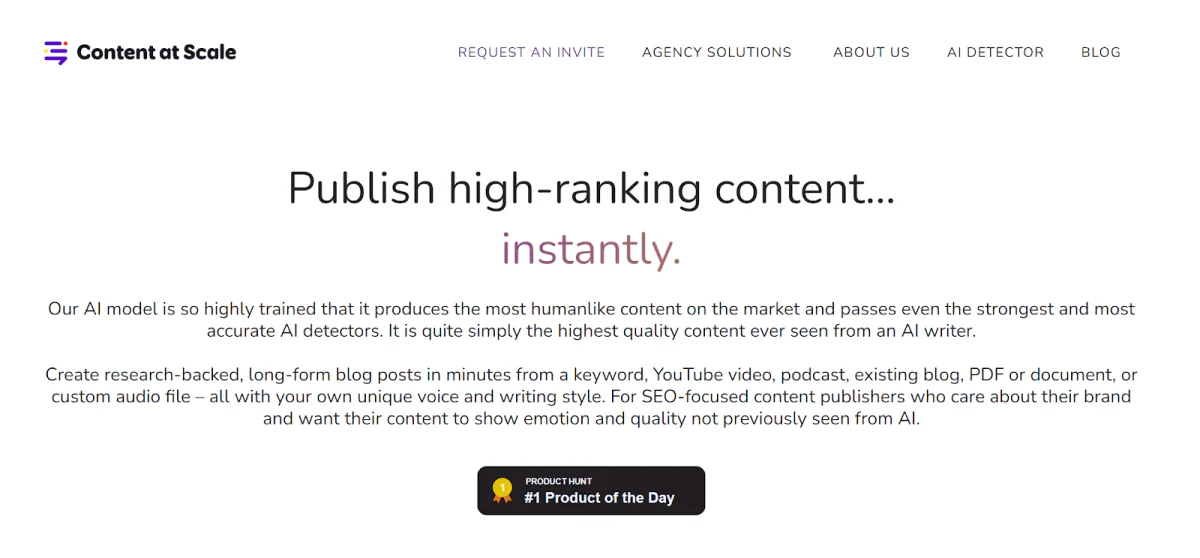
Content at Scale is a tool created specifically for SEO purposes, with the ability to produce content that closely resembles human writing. It allows users to rapidly generate blog posts optimized for search engines (containing over 2,600 words!) that can be almost immediately published.
You can create content by giving it various sources, including keywords, YouTube videos, podcasts, existing blogs, PDFs, documents, or audio files. The also tool utilizes real-time research techniques using natural language processing (NLP), semantic analysis, and the most effective SEO strategies to compose complete articles in your distinctive tone of voice!
Surfer SEO is a comprehensive tool offering various features to help skyrocket your organic traffic. From its powerful Content Editor and Keyword Research tools to the extremely useful Surfer AI and Grow Flow functionalities, it provides the necessary insights and guidance to optimize your content and improve your search engine rankings.
For many successful businesses like Lenovo, Intuit, and Shopify, Surfer SEO has proven invaluable in their search engine optimization efforts (you can read testimonials from customers on the Surfer SEO homepage). Its comprehensive features and user-friendly interface it has helped them achieve remarkable results in increasing organic traffic.
What I love most about Surfer is its Content Editor. When writing content and trying to incorporate keywords, it can sometimes feel like a fun game to achieve a high optimization score in the green zone (70+). Surfer AI is the cherry on top if you don’t have the time or energy to create an SEO-optimized article manually.
Surfer SEO also offers many other incredibly useful features, like performing SEO Audits, which allow me to identify areas for improvement and optimize various on-page factors.
While it has its pros and cons, the pricing plans are flexible and cater to different needs. But if the pricing plans don’t fit your budget or needs, Scalenut, Content at Scale, and MarketMuse are worth considering as alternatives.
Overall, Surfer SEO has proven valuable for businesses and marketers looking to enhance their SEO strategies and drive more organic website traffic.
Click Here to Visit Surfer SEO.
Surfer SEO is known for its user-friendly interface and ease of use. They also provide helpful resources like video training, Surfer Academy, a community, a knowledge base, and more if you need help or guidance.
Yes, Surfer SEO works. Large brands like Lenovo, Intuit, and Shopify use it, and after implementing Surfer SEO’s recommendations, other users have reported significant improvements in organic rankings and traffic reflected in the testimonials on the Surfer SEO homepage.
Surfer SEO analyzes the top-ranking pages for a given keyword and provides recommendations to improve your content. It examines on-page factors like word count, headings, and keyword density. It also offers useful off-page SEO metrics such as backlinks and domain authority from the competition.
A good score in Surfer SEO is typically above 70 (in the green). Using a scale of 0 to 100, Surfer SEO measures the optimization of your content. Aim for a score higher than your competitors to improve your chances of ranking higher in search results. The target score may vary depending on the keyword and competition level.
Copy AI Review: The Best AI Writing Tool? (August 2025)
Scalenut Review: The Best AI SEO Writing Generator? (August 2025)
Janine Heinrichs is a Content Creator and Designer helping creatives streamline their workflow with the best design tools, resources, and inspiration. Find her at janinedesignsdaily.com.
10 Best AI SEO Tools (August 2025)
10 Best AI Writing Generators (August 2025)
10 Best AI Video Generators (August 2025)
10 Best AI Marketing Tools (August 2025)
10 Best AI Tools for Business (August 2025)
10 Best AI Code Generators for Vibe Coding (August 2025)
Advertiser Disclosure: Unite.AI is committed to rigorous editorial standards to provide our readers with accurate information and news. We may receive compensation when you click on links to products we reviewed.
Copyright © 2025 Unite.AI
36 New Link Building Statistics 2025 — Trends & Facts – demandsage.com
Link building continues to be a critical strategy in SEO, with various tactics evolving to stay ahead of Google’s algorithms. Recent data shows that 82% of SEOs rely on backlink analysis tools like Ahrefs and Semrush, showcasing the importance of understanding competitors’ link profiles.
Google uses over 200 factors to rank a website, in which links play the most prominent role. However, 95% of website pages have zero backlinks, while 94% of them failed to secure any links for their content.
AI is slowly taking over the SEO industry and many marketers are taking advantage of it. Most of them use backlink automation tools to find and secure backlinks.
Find out more link-building statistics and trends of 2025, so you don’t miss any easy opportunity to secure backlinks.
Additionally, 59.4% of link-building agencies report having over five years of experience, emphasizing the role of established knowledge and long-term industry involvement in achieving effective results.
A survey by Authority Hacker revealed that most participants (618 out of 755) observed the impact of backlinks on search rankings within 1 to 6 months. Among them, the majority indicated that backlinks start influencing rankings within 1 to 3 months, emphasizing the need for strategic planning and patience in link-building efforts.
Here are further details about the time needed by the links to impact search rankings according to marketers:
This suggests that many professionals understand the value of no-follow links in creating a diverse link-building strategy. They help maintain a balanced, organic backlink profile, even if these links do not directly impact search engine rankings.
Agencies and in-house SEO teams mainly use digital PR, while independent website owners rarely adopt it. Though more expensive than methods like guest posting or HARO, digital PR delivers higher-quality backlinks, making it a powerful tool for boosting SEO performance.
Here is a table displaying the popularity of PR building among different types of link builders:
This challenge arises from the time and effort needed to acquire high-quality backlinks, which are crucial for boosting search engine rankings.
This highlights the limited value of paid link-building strategies. Organic, high-quality backlinks are far more effective than paid methods in delivering sustainable, long-term SEO improvements.
Acquiring high-quality backlinks helps establish trust and credibility with both search engines and users, ultimately enhancing a brand’s online reputation and visibility. These backlinks signal authority, making the brand more likely to rank higher in search results and gain recognition from its audience.
This demonstrates the growing understanding that acquiring high-quality, authoritative backlinks is more effective for SEO than simply focusing on the number of links. Quality backlinks from trusted sources are essential for improving search rankings and driving valuable traffic to a website.
Link builders with less than a year of experience typically manage to build only about 7 links per month. In contrast, those with over five years of experience are able to generate an average of 25 links per month. This significant difference highlights the role of expertise in improving link-building efficiency and the ability to secure high-quality backlinks.
Here is a table highlighting the link acquisition based on experience:
Agencies stand out with the highest proportion of experienced link builders, with 59.4% having over 5 years of experience.
This approach focuses on producing valuable, high-quality content that naturally attracts links from other websites, reinforcing its role as a key component of an effective link-building strategy.
This practice involves swapping backlinks with other websites, which can help improve SEO rankings. However, it’s often seen as a less organic approach compared to other link-building methods that focus on earning high-quality backlinks through content and outreach.
This approach involves creating valuable content for other websites in exchange for backlinks, making it an effective way to build authority, drive traffic, and improve search engine rankings.
Interestingly, 71.3% of link builders who pay for links frequently use guest posting, compared to 46.4% of those who avoid paid links.
Here is a table displaying the most popular link-building tactics according to marketers:
With tools like Ahrefs and SEMRush, you can easily view the backlink profile of competitor pages. And once you know who’s linking to your competitors, you can target those same links in your own link-building campaigns.
HubSpot successfully integrated AI-driven content analysis and link-building tools to enhance its backlink profile. This shift to AI-powered strategies significantly streamlined their efforts and boosted overall productivity.
This approach leverages the extensive reach and engagement potential of platforms like Facebook, Twitter, and LinkedIn to share content, attract backlinks, and build relationships with target audiences.
This average cost of a paid link excludes expenses for outreach or content creation. Authority Hacker’s survey highlights a recent rise in link prices, driven by inflation and increased demand. This reflects the growing costs of paid link-building strategies.
Experienced link builders are 49% more cost-effective per link than less experienced ones as they produce three to four times more links, making them a better investment despite earning higher salaries.
This increased productivity results in lower overall costs, proving that skilled professionals offer greater value by delivering more links at a reduced cost.
Around 34.1% spend $1,000 or less per month, while 20.3% invest between $5,000 and $10,000. Only about 7.1% of businesses allocate over $15,000 monthly.
In this section we will go through how strategic approaches to link building drive results with two standout examples. These case studies highlight Backlinko’s innovative Skyscraper Technique and Ahrefs’ creative use of a ‘Stats’ page, both showcasing the power of well-executed campaigns to secure high-quality backlinks and achieve top search rankings.
The Skyscraper Technique, created by Brian Dean of Backlinko in 2015, is one of the most popular and effective link-building strategies in SEO. This method involves identifying content that already has many backlinks, creating a superior version of it, and leveraging that improved content to acquire those backlinks and enhance search rankings.
Here are the steps for Executing the Skyscraper Technique:
Website owners prefer linking to high-quality resources and may update their links to point to better-quality content if it offers more value.
Backlinko’s application of the Skyscraper Technique led to impressive results. Out of 160 cold emails sent as part of the outreach process, 17 backlinks were successfully secured, resulting in an 11% success rate.
While this may seem like a modest number of backlinks, the quality of these links was far more important than quantity. These backlinks came from reputable, high-authority websites, making them incredibly valuable for improving search engine rankings.
The impact on organic traffic was substantial, with a 110% increase observed within just 14 days. This rapid increase highlights the significant benefits of using this approach to improve SEO performance.
In conclusion, the Skyscraper Technique proved to be a highly effective method for acquiring valuable backlinks and improving search rankings, particularly when executed strategically with a focus on quality rather than quantity.
However, recently, Matt Diggity, a well-known SEO expert and the founder of Diggity Marketing, shared on his YouTube channel that the Skyscraper Technique may not be as effective today as it once was. According to him, link builders now face the reality that they may need to pay for backlinks from the websites they reach out to rather than relying solely on the traditional outreach method.
Source: Backlinko, Semrush.
The team at Ahrefs implemented an innovative link-building strategy using a ‘Stats’ page, resulting in a #1 ranking. This approach applied a tailored version of the Skyscraper Technique. This method was theorized to be particularly effective for statistics pages due to several factors:
Statistics pages naturally become reference points for bloggers and journalists, making them an attractive target for this approach.
The process involved several well-defined steps. They are as follows:
Outreach Campaign Results
Breakdown of Outreach Outcomes
Link Quality Metrics of the Backlinks received:
The campaign showed that adapting the Skyscraper Technique for statistics pages is a powerful way to gain high-quality backlinks. Although the total number of links was modest, the focus on quality delivered strong results. Most of the backlinks met key SEO standards, boosting search rankings and organic traffic. This highlights the importance of strategic content creation and targeted outreach for effective SEO.
Source: Ahref
Link building remains a key part of SEO strategies, but its focus has shifted to quality and innovation.
The evolution of link-building in 2025 emphasizes quality, innovation, and ethical practices. To stay competitive, businesses must prioritize creating valuable, expert-driven content, leverage AI tools for efficiency, and focus on authentic influencer partnerships. As search engines continue to refine their algorithms, adhering to these principles will ensure sustained visibility and growth in the ever-changing digital landscape.
Here are some link-building trends you can expect in 2025:
Long-form content, particularly pieces exceeding 3,000 words, tends to generate approximately 3.5 times more backlinks than shorter articles. This statistic emphasizes the importance of creating comprehensive and highly valuable content to attract organic links.
AI tools are increasingly being adopted to streamline processes like identifying link opportunities, analyzing content quality, and automating outreach. This integration is expected to boost efficiency, allowing marketers to focus more on strategy and relationship-building.
Advanced tools are revolutionizing how marketers analyze and secure backlinks.
Partnering with industry influencers is becoming a key strategy. Influencers with authoritative websites can drive high-quality backlinks and amplify content visibility through their networks.
The shift away from paid links reflects the importance of earning backlinks organically. Search engines are prioritizing relevance and authenticity, rewarding genuine outreach and high-quality content with better rankings.
Google’s emphasis on E-E-A-T continues to grow. Content must demonstrate expertise and authority while building user trust, a trend that underscores the need for factual, well-researched, and user-centric content.
The most successful link-building agencies typically have over five years of experience, highlighting the importance of expertise and long-term commitment to mastering this field. Their seasoned approach often translates into more effective strategies and consistent results.
Your email address will not be published.
Data-Driven Solution For Business Growth
© Copyright 2025 DemandSage All rights reserved
